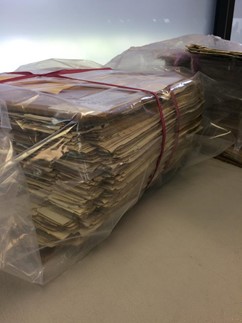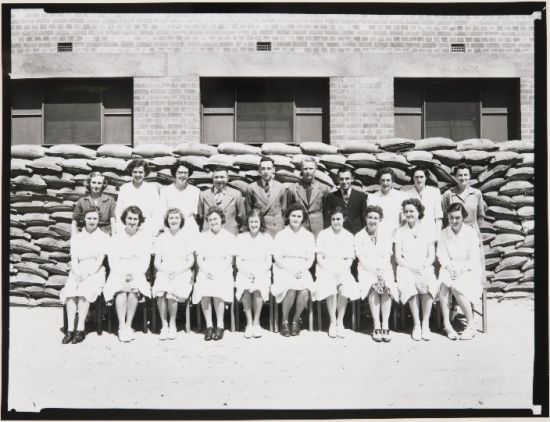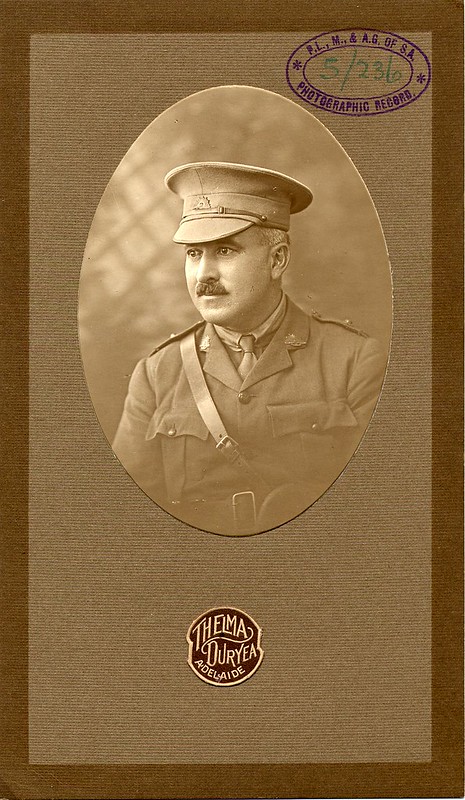State Records has completed a project that makes it easier to access South Australian Railways (SAR) employee history sheets. These records show the working history for over 53,000 staff of the SAR from the 1880s to 1975.
Before we started this project, finding an ancestor who had worked for the SAR was very difficult. Researchers had to search through multiple large and heavy bundles. There was no guarantee that their ancestor was in the records as we did not have an index to names. The way the sheets were stored was threatening their long-term preservation, as there was no protection from bumps and tears.
We knew that re-sorting the records into alphabetical order and creating an index would make finding employees easy, quick, and reliable. Archives do not usually re-sort records into a different system of arrangement, as this changes their original order. Our Archive Team investigated and decided that the bundles were probably not how the records were used by the SAR. Instead, they probably reflect how the records were stored after someone had left the SAR and the sheet did not need to be used anymore. Due to this and the important benefits to preservation and access we decided that the project should go ahead.
The project ran in two stages. The first stage began in November 2018 when staff and volunteers began to take apart the 70 bundles of sheets and sorted them into alphabetical order. This process took almost two years to complete (with a couple of interruptions due to the COVID-19 pandemic).
The second stage began in August 2020. A volunteer entered every name, date of birth and dates of service into an Excel spreadsheet to create an index. At the same time the volunteer put the sheets into new folders, that would protect them from damage.
This volunteer, Meredith, had been involved with the project from the beginning. In Meredith’s words:
This project was a very rewarding one: to see the employee sheets start off in their large, randomized bundles, then eventually to have them stored in alphabetised, smaller, protective folders was very pleasing. Such important historic documents now safely stowed, and accessible.
The indexing side of the project was also fascinating: as I typed, I pondered the lives of these people, their immigrant story, those who were given leave to enlist…and so many to have “killed in action” recorded on their sheet: a microcosm of our State’s story. A geography lesson also, with many of the names of small Railway Stations previously unknown to me, spread far and wide across our State.
SAR Employees
During the project we found many interesting stories of SAR employees.
There were even some famous names, including Arthur Sherlock Holmes and James Bond (a youth labourer at St Leonards, not a secret agent!).
The records cover the years of the First and Second World Wars and record details of workers who enlisted in the armed forces.
Harry Heywood Coombe started work with the SAR in 1909 at Port Wakefield. In 1915 Harry was granted leave from the SAR to join the expeditionary forces and his record shows he was sadly killed in action in 1918. (GRG26/5/4/236)
Victoria Cross recipient Phillip Davey’s honour was recorded on his employee sheet when he started work for the SAR in 1926. Davey was at Gallipoli on 25 April 1915 and was later awarded the Victoria Cross for gallantry in 1918 during the capture of Merris in France.
SAR Women
Many women are included in the records, especially during the Second World War when the SAR took on the construction of aircrafts and munitions.
Jean Ainsworth (nee Rowling) worked as a Riveter and Assembler at the Islington aircraft station in 1942. We like to think of Jean as South Australia’s own Rosie the Riveter!
Indexes to SAR Records
The index to the SAR records can now be searched
To view a sheet you can:
- Make a booking to visit our Research Centre and pre-order the record
- Request a quote for a copy of the record
If you don’t find someone on this index, there are other South Australian Railways records that may be useful.
See the Railway Employees page for more guidance about these records.
The final stage in the project is to digitise the sheets and make these copies available online.
Many staff at State Records and volunteers were involved in this project. We would like to thank them all for their hard work to improve access and preservation for these records.


